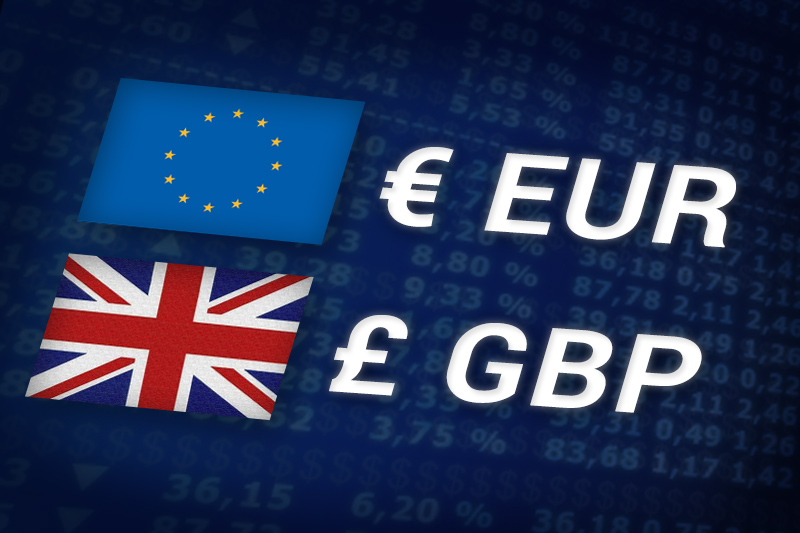Investing.com - The euro was little changed against the pound on Tuesday, hovering close to a three-and-a-half-year low after better-than-expected U.K. manufacturing data eased concerns over the country’s economic outlook.
Investors remained cautious ahead of a second day of talks between euro zone finance ministers in Brussels later in the day.
EUR/GBP hit 0.7920 during European morning trade, the session low; the pair subsequently consolidated at 0.7929, easing down 0.05%.
The pair was expected to find near-term support at 0.7914, Monday’s low and the lowest since November 3, 2008 and resistance at 0.7983, the high from July 6.
The pound found support after data showed that manufacturing production in the U.K. rose sharply in May, more than erasing the previous month’s decline, while industrial production jumped as well.
In a report, the U.K. Office for National Statistics said that manufacturing production rose by 1.2% in May, blowing past expectations for a more modest 0.1% gain, after falling by 0.8% in April.
The report also showed that industrial production rose 1.0% in May, defying expectations for a 0.2% drop, after declining a revised rate of 0.4% in April.
A separate report showed that the U.K.’s goods trade deficit narrowed more-than-expected in May, as exports picked up from the previous month.
The ONS said the country's goods trade deficit narrowed to a seasonally adjusted GBP8.4 billion in May from a deficit of GBP9.7 billion in April, as exports jumped 6.6%.
Meanwhile, sentiment on the euro remained fragile as markets eyeing a second day of talks between euro zone finance ministers.
European finance ministers on Monday reached a deal to make EUR30 billion in aid available to assist Spain’s struggling banking sector by the end of the month, while also supporting plans to extend Spain’s deficit target deadline by one year to 2014.
They made no apparent progress, however, on activating the bloc's rescue funds to intervene in bond markets and bring down Spain and Italy’s spiraling borrowing costs.
Spain’s 10-year government bonds eased to 6.9% earlier, moving below the critical 7% threshold which is widely seen as unsustainable in the long-term.
Elsewhere, the euro was fractionally higher against the U.S. dollar but lower against the yen, with EUR/USD adding 0.06% to hit 1.2319 and EUR/JPY down 0.22% to 97.74.
Also Tuesday, official data showed that French industrial production tumbled 1.9% in May, far more than expectations for a 0.9% fall and following a 1.4% rise the previous month.
Investors remained cautious ahead of a second day of talks between euro zone finance ministers in Brussels later in the day.
EUR/GBP hit 0.7920 during European morning trade, the session low; the pair subsequently consolidated at 0.7929, easing down 0.05%.
The pair was expected to find near-term support at 0.7914, Monday’s low and the lowest since November 3, 2008 and resistance at 0.7983, the high from July 6.
The pound found support after data showed that manufacturing production in the U.K. rose sharply in May, more than erasing the previous month’s decline, while industrial production jumped as well.
In a report, the U.K. Office for National Statistics said that manufacturing production rose by 1.2% in May, blowing past expectations for a more modest 0.1% gain, after falling by 0.8% in April.
The report also showed that industrial production rose 1.0% in May, defying expectations for a 0.2% drop, after declining a revised rate of 0.4% in April.
A separate report showed that the U.K.’s goods trade deficit narrowed more-than-expected in May, as exports picked up from the previous month.
The ONS said the country's goods trade deficit narrowed to a seasonally adjusted GBP8.4 billion in May from a deficit of GBP9.7 billion in April, as exports jumped 6.6%.
Meanwhile, sentiment on the euro remained fragile as markets eyeing a second day of talks between euro zone finance ministers.
European finance ministers on Monday reached a deal to make EUR30 billion in aid available to assist Spain’s struggling banking sector by the end of the month, while also supporting plans to extend Spain’s deficit target deadline by one year to 2014.
They made no apparent progress, however, on activating the bloc's rescue funds to intervene in bond markets and bring down Spain and Italy’s spiraling borrowing costs.
Spain’s 10-year government bonds eased to 6.9% earlier, moving below the critical 7% threshold which is widely seen as unsustainable in the long-term.
Elsewhere, the euro was fractionally higher against the U.S. dollar but lower against the yen, with EUR/USD adding 0.06% to hit 1.2319 and EUR/JPY down 0.22% to 97.74.
Also Tuesday, official data showed that French industrial production tumbled 1.9% in May, far more than expectations for a 0.9% fall and following a 1.4% rise the previous month.
